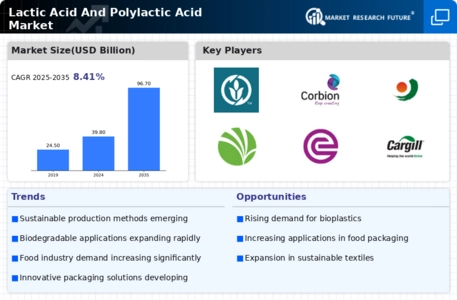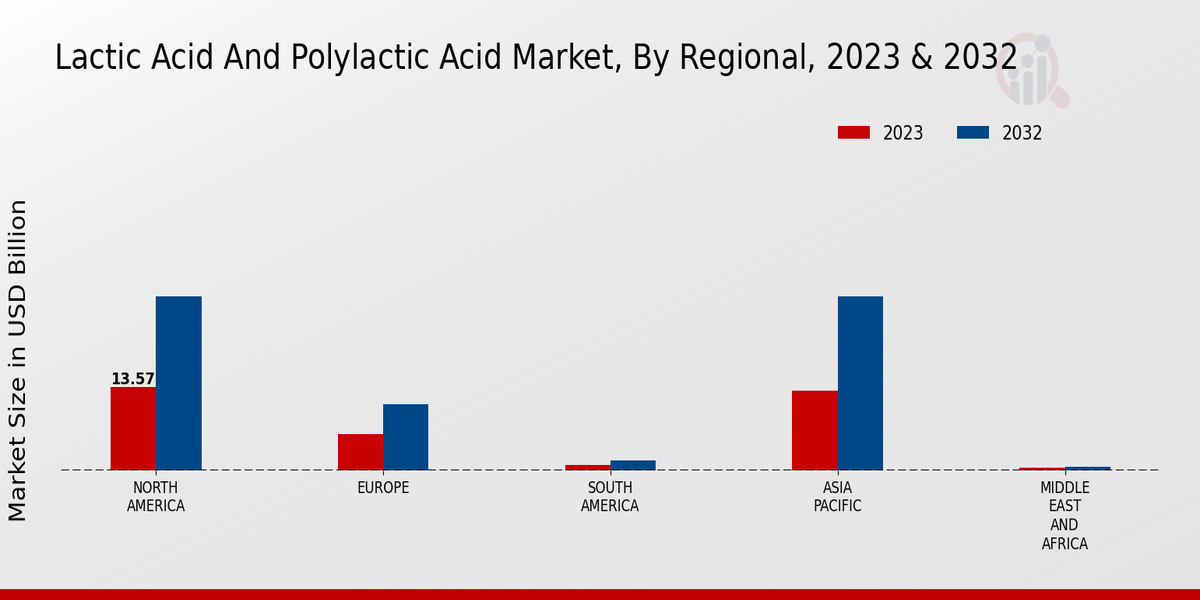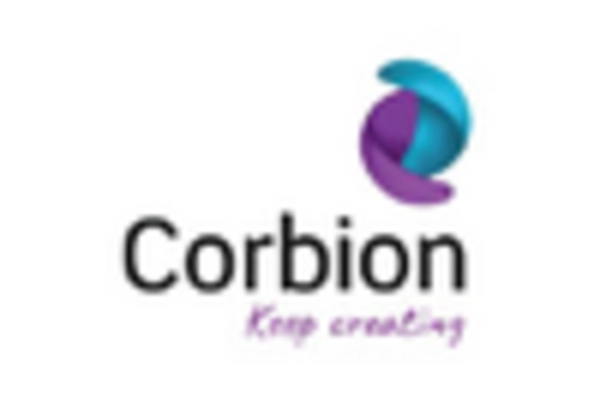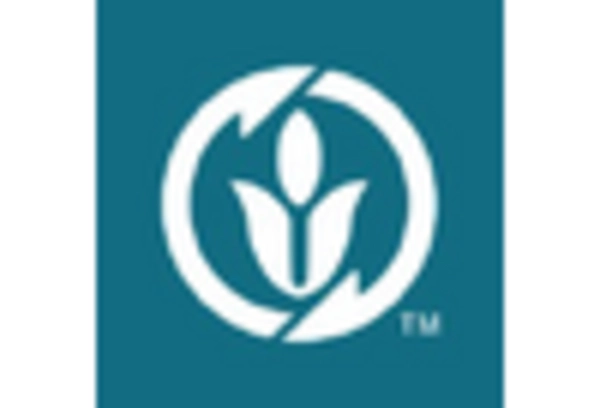Regulatory Support
Government regulations promoting the use of biodegradable materials are influencing the Lactic Acid And Polylactic Acid Market positively. Many countries are implementing policies that encourage the reduction of plastic waste and the adoption of sustainable materials. For instance, regulations mandating the use of biodegradable packaging in certain sectors are creating a favorable environment for lactic acid and polylactic acid products. This regulatory support is expected to bolster market growth, as manufacturers seek to comply with these standards. The market is likely to expand as more industries recognize the benefits of using lactic acid and polylactic acid in their products, driven by both consumer demand and regulatory frameworks.
Technological Innovations
Technological advancements in the production processes of lactic acid and polylactic acid are likely to enhance the efficiency and reduce costs associated with their manufacturing. Innovations such as fermentation technology and genetic engineering are being explored to optimize yield and reduce production time. These advancements not only improve the economic viability of lactic acid and polylactic acid but also contribute to their broader adoption across various sectors. The Lactic Acid And Polylactic Acid Market is witnessing a shift towards more efficient production methods, which could potentially lead to lower prices for consumers and increased market penetration. As technology continues to evolve, the industry may see a rise in new applications and formulations, further driving demand.
Sustainability Initiatives
The increasing emphasis on sustainability appears to be a pivotal driver for the Lactic Acid And Polylactic Acid Market. As consumers and manufacturers alike prioritize eco-friendly products, the demand for biodegradable materials is surging. Lactic acid, derived from renewable resources, aligns with these sustainability goals, making it a preferred choice in various applications, including packaging and textiles. The market for polylactic acid, a polymer made from lactic acid, is projected to grow significantly, with estimates suggesting a compound annual growth rate of over 20% in the coming years. This trend indicates a shift towards sustainable practices, compelling industries to adopt lactic acid and polylactic acid as viable alternatives to petroleum-based products.
Expanding Applications in Medical Field
The medical field is increasingly adopting lactic acid and polylactic acid, which is emerging as a significant driver for the Lactic Acid And Polylactic Acid Market. Polylactic acid is utilized in various medical applications, including sutures, drug delivery systems, and tissue engineering, due to its biocompatibility and biodegradability. The market for polylactic acid in medical applications is expected to grow, with projections suggesting a compound annual growth rate of over 18% in the next few years. This expansion indicates a growing recognition of the benefits of using lactic acid and polylactic acid in healthcare, potentially leading to innovative solutions and improved patient outcomes.
Rising Demand in Food and Beverage Sector
The food and beverage sector is increasingly recognizing the benefits of lactic acid and polylactic acid, which is driving growth in the Lactic Acid And Polylactic Acid Market. Lactic acid is widely used as a preservative and flavoring agent, while polylactic acid is gaining traction in food packaging due to its biodegradable properties. The market for lactic acid in food applications is projected to reach substantial figures, with estimates indicating a growth rate of around 15% annually. This rising demand reflects a broader trend towards healthier and more sustainable food options, compelling manufacturers to explore lactic acid and polylactic acid as essential components in their product offerings.


















Leave a Comment